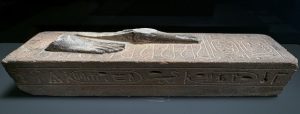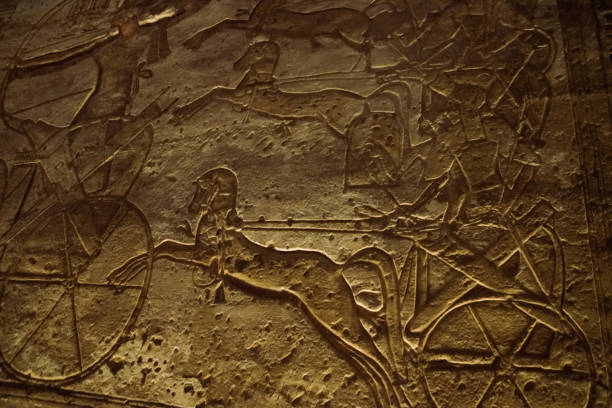The Nine Bows: Egypt’s Ancient Enemies
The Nine Bows refers to the nine enemies identified by the ancient Egyptians. They commemorated their victories over these foes on the walls of their temples and tombs. These enemies included: •The Tehenu: Also known as the Libyans, they inhabited North Africa. •The Nubians: The people of Nubia, located south of Egypt and in present-day Sudan. •Asiatics: Peoples from the Middle East. •The Budu: Tribes living in the region between Nubia and Sudan. •The Shasu: Bedouin tribes from the northern Arabian Peninsula. •The Hyksos: West Asian invaders who ruled Egypt for a short period. •The Aamu: People from the Horn of Africa, possibly corresponding to the modern-day Ethiopians or Eritreans. •The Mitanni: A kingdom in northern Syria and Iraq. •The Khatti: Also known as the Hittites, a powerful empire in Anatolia (modern-day Turkey).
Discovery of a Statue Base of Ramses II
A statue base belonging to King Ramses II has been discovered in Antinopolis, a city in Minya Governorate, Egypt. The base is rectangular in shape and made of sandstone. It features a deep carving of Ramses II’s cartouche on three sides, along with the nine bows depicted above the base, beneath Ramses II’s feet. The artifact is currently on display at the British Museum.

The Nine Bows Palette
It depicts the traditional enemies that the ancient Egyptians considered a threat to their kingdom. The palette shows King Tutankhamun seated on his throne with his foot placed upon the necks of nine captives, symbolizing his victory over Egypt’s adversaries. This artwork is a magnificent representation of the grandeur of ancient Egyptian civilization and its success in maintaining security and stability throughout the ages. The palette vividly portrays nine captives or enemies who have been captured after battles. They are depicted in a bound state, with their forms rendered in vibrant and varied colors, reflecting the advanced art and craftsmanship that characterized Egyptian civilization.





